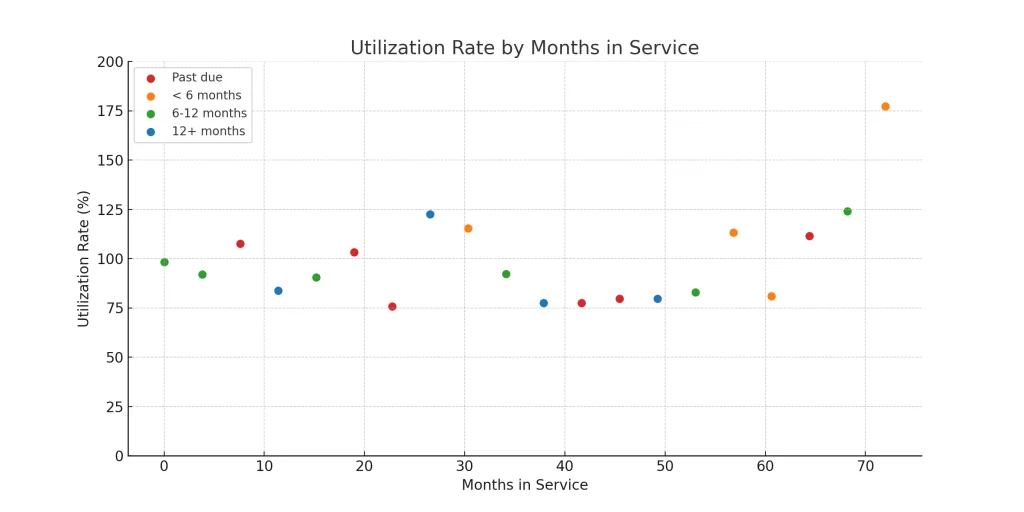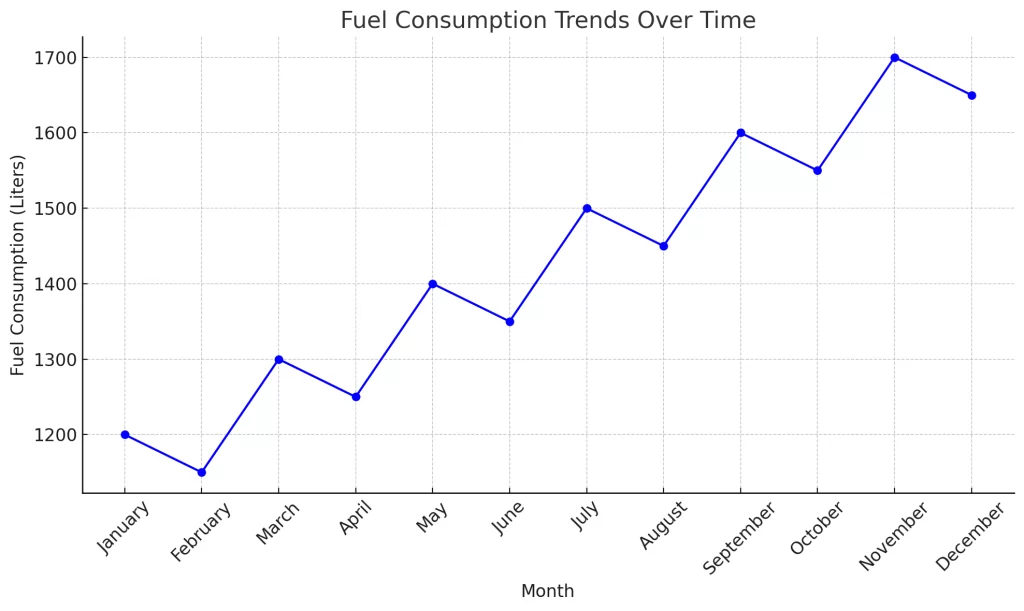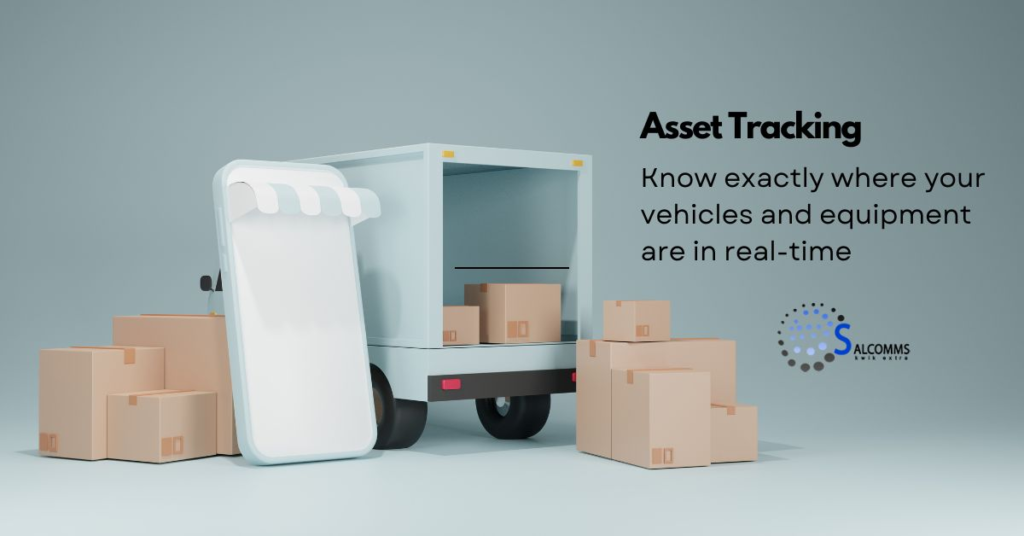Introduction
Fleet managers face numerous challenges in maintaining efficient operations. Effective use of various reports can significantly enhance productivity, cost-efficiency, and regulatory compliance. Here are the top 30 fleet management reports that every fleet manager should see.
1. Vehicle Utilization Report
A Vehicle Utilization Report tracks how your fleet’s vehicles are used, identifying underused and overused vehicles. This data can help you optimize your resource allocation and ensure efficient use of your fleet.

Identifying Underused and Overused Vehicles
You can analyze utilization metrics such as vehicle mileage and hours of operation to pinpoint which vehicles need more or less use.
Examples of Utilization Metrics
You can use the following important metrics to get a comprehensive view of vehicle utilization:
- average mileage,
- hours of operation, and
- frequency of use
2. Fuel Consumption Report


Fuel is one of the most significant expenses in fleet management. A Fuel Consumption Report tracks fuel usage across the fleet by identifying periods of high fuel usage so that you as a fleet manager can implement corrective measures.
This also comes in very handy to enable you quickly identify issues like fuel theft or inefficient driving habits.
You can also implement driver training programs and route optimization, as additional fuel-saving measures that can significantly reduce your fuel expenses.
3. Maintenance Report
Maintenance reports are a crucial component of any fleet management strategy.
These detailed records track and document regular maintenance activities, ensuring that all necessary tasks are completed on schedule and that any issues are addressed promptly.
By monitoring maintenance history, you can easily plan for future tasks and track costs so you can proactively manage your fleet operations.
Effective maintenance reporting also helps identify potential issues before they become major problems. This allows for timely repairs and minimizes the risk of costly breakdowns and vehicle downtime, improving the overall efficiency and safety of your fleet and drivers.
4. Driver Performance Report
Evaluating Driver Behavior
Driver behavior directly impacts your fleet safety and efficiency. A Driver Performance Report will evaluate metrics such as speeding, harsh braking, and idling.
Our state-of-the-art video monitoring systems also track distracted driving and dozing.
These metrics help identify areas for improvement and opportunities for driver training programs.
These reports give you key insights to inform targeted training programs to improve overall driver performance.


5. Route Optimization Report
Analyzing Driver Routes
A Route Optimization Report analyzes the routes taken by drivers, identifying inefficiencies and opportunities for improvement.
Benefits of Route Optimization
Optimizing routes can lead to significant savings in fuel costs and time, enhancing customer satisfaction by ensuring timely deliveries.
Tools and Software for Route Planning
Several tools and software solutions assist in route optimization, providing real-time data and analytics for informed decision-making.
6. Compliance Report
Ensuring Regulatory Compliance
Compliance Reports track inspections, licensing, and other regulatory requirements, ensuring the fleet operates within legal parameters.
Tracking Inspections and Licensing
By monitoring compliance metrics, fleet managers can ensure all vehicles and drivers meet necessary standards, avoiding fines and operational disruptions.
Consequences of Non-Compliance
Non-compliance can lead to severe penalties, including fines and suspension of operations. Regular reporting helps mitigate these risks.
7. Cost Analysis Report
Breakdown of Fleet Expenses
A Cost Analysis Report provides a detailed breakdown of fleet expenses, helping managers identify cost-saving opportunities.
Identifying Cost-Saving Opportunities
By analyzing expenditure areas, fleet managers can pinpoint high-cost areas and implement strategies to reduce expenses.
Comparing High vs. Low Expenditure Areas
This comparison helps in understanding where money is well spent versus areas needing improvement, facilitating better budgeting and resource allocation.
8. Accident and Incident Report
Recording Accident Details
Accident and Incident Reports are crucial for documenting the details of any incidents, including the time, location, and circumstances.
Assessing Risks and Preventive Measures
Analyzing these reports helps in identifying risk patterns and implementing preventive measures to enhance safety.
Impact on Insurance and Safety Policies
Accurate reporting can positively impact insurance premiums and inform safety policy updates.
9. Asset Tracking Report
Real-Time Asset Location
An Asset Tracking Report provides real-time information on the location of fleet assets, enhancing operational efficiency and security.
Monitoring Vehicle Movements
This report helps in tracking vehicle movements, ensuring assets are where they should be and preventing unauthorized use.
Enhancing Security and Operational Efficiency
By knowing the exact location of assets, fleet managers can optimize routes and schedules, enhancing overall operational efficiency.


10. Inventory Report
Managing Spare Parts and Supplies
An Inventory Report tracks the availability of spare parts and supplies, ensuring repairs can be completed promptly.
Ensuring Availability for Repairs
This report helps in maintaining an optimal inventory level, avoiding delays due to parts shortages.
Inventory Control Techniques
Implementing inventory control techniques, such as just-in-time inventory, can reduce costs and improve efficiency.
11. Productivity and Efficiency Report
Tracking Technician Labor Data
A Productivity and Efficiency Report tracks technician labor data, providing insights into productivity scores.
Insights into Productivity Scores
This report helps in identifying areas for improvement and opportunities for enhancing workforce efficiency.
Improving Workforce Efficiency
By analyzing productivity data, fleet managers can implement strategies to boost technician efficiency.
12. Warranty A/R Aging Report
Managing Warranty Reimbursements
A Warranty A/R Aging Report tracks warranty reimbursements and owed amounts.
Tracking Owed Amounts
This report helps in ensuring timely reimbursement from manufacturers and optimizing warranty claims processes.
Optimizing Warranty Claims Processes
Regular monitoring helps in managing claims efficiently, reducing the time taken to receive reimbursements.
13. Work Order Detail Report
Overview of Work Orders
A Work Order Detail Report provides an overview of all work orders, including details on asset repairs and associated costs.
Details on Asset Repairs
This report helps in tracking the progress of repairs and ensuring timely completion.
Cost Analysis of Work Orders
Analyzing work order costs helps in identifying high-cost areas and implementing cost-saving measures.
14. Work Order Summary by System Code Report
Analyzing Costs by Asset System
This report breaks down costs by asset system, identifying high maintenance areas.
Identifying High Maintenance Areas
By identifying systems that incur high maintenance costs, fleet managers can implement targeted strategies for cost reduction.
Strategies for Cost Reduction
Implementing preventive maintenance and other cost-saving measures can significantly reduce maintenance expenses.
15. Work Order Summary by Reason for Repair Report
Tracking Repair Reasons
A Work Order Summary by Reason for Repair Report tracks the reasons for repairs, identifying trends.
Identifying Trends
This report helps in understanding common repair issues and implementing preventive measures.
Optimizing Maintenance Practices
By addressing recurring issues, fleet managers can optimize maintenance practices and reduce downtime.
16. Vehicle Off-Road Report
Identifying Non-Operational Vehicles
A Vehicle Off-Road Report tracks vehicles that are not operational, helping optimize fleet utilization.
Optimizing Fleet Utilization
By identifying non-operational vehicles, fleet managers can reduce downtime and improve overall fleet efficiency.
Reducing Downtime
Regular reporting helps in ensuring timely repairs and reducing vehicle downtime.
18. Outstanding Defects Report
Tracking Defects
An Outstanding Defects Report tracks all vehicle defects, ensuring timely repairs.
Ensuring Timely Repairs
This report helps in minimizing operational interruptions by ensuring all defects are addressed promptly.
Minimizing Operational Interruptions
By staying on top of defects, fleet managers can reduce the risk of unexpected breakdowns.
19. Open Job Cards Report
Tracking Open Maintenance Tasks
An Open Job Cards Report tracks all open maintenance tasks, ensuring timely completion.
Ensuring Timely Completion
This report helps in improving maintenance workflow and reducing backlog.
Improving Maintenance Workflow
Regular monitoring ensures that all tasks are completed on time, enhancing overall maintenance efficiency.
20. Fleet Make-Up Report
Overview of Fleet Composition
A Fleet Make-Up Report provides an overview of the fleet composition, helping optimize fleet management.
Optimizing Fleet Management
By understanding the composition of the fleet, managers can make informed decisions on vehicle allocation and replacement.
Balancing Fleet Diversity
Ensuring a balanced and diverse fleet can enhance operational efficiency.
21. Fuel Costs Report
Tracking Fuel Consumption
A Fuel Costs Report tracks fuel consumption and expenses, providing insights into fuel efficiency.
Cost Analysis of Fuel Expenses
This report helps in identifying high fuel costs and implementing cost-saving measures.
Strategies for Fuel Efficiency
Implementing strategies such as route optimization and driver training can significantly reduce fuel expenses.
22. Total Cost of Ownership (TCO) Report
Evaluating Asset Value
A Total Cost of Ownership (TCO) Report evaluates the long-term value of fleet assets, helping in budgeting and cost management.
Long-Term Budgeting
This report provides insights into the long-term costs associated with fleet assets, facilitating better budgeting.
Optimizing Cost Management
By understanding the total cost of ownership, fleet managers can make informed decisions on asset purchase and maintenance.
23. Driver Vehicle Inspection Reports (DVIR)
Tracking Inspection Results
Driver Vehicle Inspection Reports (DVIR) track the results of vehicle inspections, ensuring compliance with safety standards.
Ensuring Compliance
Regular inspections help in maintaining compliance with regulatory requirements.
Identifying Potential Issues
This report helps in identifying potential issues before they become major problems, enhancing overall fleet safety.
24. Preventive Maintenance Practices Report
Tracking Maintenance Schedules
A Preventive Maintenance Practices Report tracks all maintenance schedules, ensuring timely servicing.
Ensuring Timely Service
This report helps in avoiding costly breakdowns by ensuring timely preventive maintenance.
Benefits of Preventive Maintenance
Regular preventive maintenance can significantly reduce repair costs and extend the lifespan of fleet assets.
25. Diagnostic Trouble Codes Report
Identifying Vehicle Problems
A Diagnostic Trouble Codes Report identifies vehicle problems through diagnostic codes, helping in optimizing repairs.
Optimizing Repairs
By addressing issues identified through diagnostic codes, fleet managers can reduce downtime and repair costs.
Reducing Downtime
Regular reporting helps in ensuring all issues are addressed promptly, minimizing vehicle downtime.
26. Odometer Readings Report
Tracking Mileage
An Odometer Readings Report tracks the mileage of fleet vehicles, ensuring timely maintenance.
Ensuring Timely Maintenance
This report helps in scheduling maintenance based on mileage, optimizing fleet utilization.
Optimizing Fleet Utilization
By tracking mileage, fleet managers can ensure all vehicles are used efficiently.
27. Telematics Device Issue Detection Report
Detecting Device Issues
A Telematics Device Issue Detection Report helps in identifying issues with telematics devices, ensuring uptime.
Ensuring Uptime
This report helps in maintaining the operational efficiency of telematics devices.
Optimizing Fleet Operations
By ensuring all devices are functioning properly, fleet managers can optimize overall fleet operations.
28. Watchdog Report by Minute
Tracking Telematics Device Health
A Watchdog Report by Minute tracks the health of telematics devices, ensuring communication and data accuracy.
Ensuring Communication and Data Accuracy
This report helps in maintaining the accuracy of telematics data, enhancing operational reliability.
Improving Operational Reliability
By ensuring all devices are functioning properly, fleet managers can improve overall operational reliability.
29. Dynamic Vehicle Maintenance Reminder Report
Reminders for Upcoming Services
A Dynamic Vehicle Maintenance Reminder Report provides reminders for upcoming services, ensuring timely maintenance.
Ensuring Timely Maintenance
This report helps in avoiding costly breakdowns by ensuring timely preventive maintenance.
Benefits of Maintenance Reminders
Regular maintenance reminders can significantly reduce repair costs and extend the lifespan of fleet assets.
30. Cost Analysis Scorecard Report
Analyzing Driver Behavior
A Cost Analysis Scorecard Report analyzes driver behavior and its impact on operational costs.
Impact on Operational Costs
By understanding the impact of driver behavior on costs, fleet managers can implement strategies to optimize fleet operations.
Optimizing Fleet Operations
Regular analysis helps in identifying areas for improvement and implementing cost-saving measures.
Conclusion
Fleet managers have a wealth of data at their fingertips to optimize operations and reduce costs. By leveraging these top 30 reports, managers can make informed decisions that enhance fleet efficiency, ensure compliance, and improve overall performance.
Ready to take your fleet management to the next level?
See Our Fleet Management Solutions
FAQs
What is a Vehicle Utilization Report?
A Vehicle Utilization Report tracks how fleet vehicles are used, identifying underused and overused vehicles to optimize resource allocation.
How can a Fuel Consumption Report help save costs?
By monitoring fuel usage and identifying inefficiencies, this report helps implement fuel-saving strategies, reducing overall fuel expenses.
Why is it important to track Driver Performance?
Tracking driver performance helps in identifying risky behaviors, enhancing safety, and reducing vehicle wear and tear through targeted training programs.
What are the benefits of a Route Optimization Report?
Route optimization reduces fuel costs, improves delivery times, and enhances customer satisfaction by identifying the most efficient routes.
How does an Asset Tracking Report enhance fleet security?
Real-time asset tracking ensures vehicles are where they should be, preventing unauthorized use and optimizing operational efficiency.
What insights can a Maintenance Costs Report provide?
This report tracks maintenance expenses, helping identify cost-saving opportunities and optimize maintenance practices.